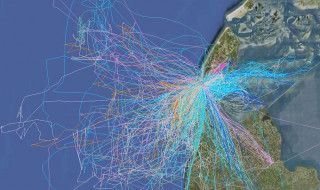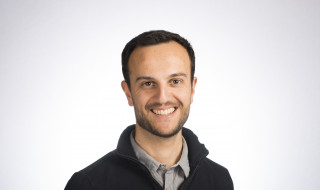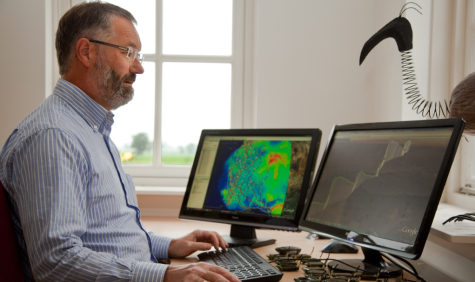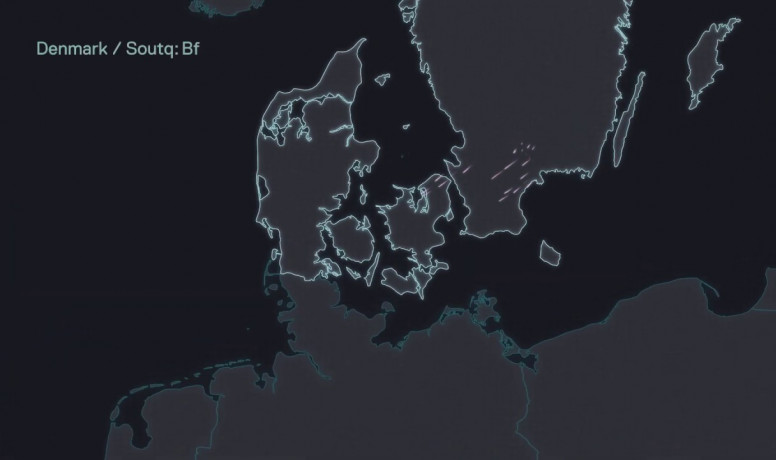"Visualisations make data attractive and understandable and provide new inspiration for further research"
From binoculars to visualised big data
Ecologist Willem Bouten of the University of Amsterdam (UvA) studies bird behaviour in relation to atmospheric dynamics: what is happening in the sky? In the process, binoculars have been traded in for big data and tiny computers that carry birds around the world. Traditional ecology is evolving into e-Ecology. Thanks in part to SURF.
Key facts
Who: Willem Bouten
Role: Professor of Computational Geo-Ecology
Organisation: UvA
Service: Visualisation and HPC Cloud
Challenge: Observing birds with binoculars provides only limited information about their behaviour.
Solution: To store, analyse, process, visualise and make extensive data on bird behaviour accessible, Bouten’s group, together with SURF, designed a user-friendly infrastructure: the Virtual Lab.
"Ecology is a very descriptive science. You study birds with binoculars and formulate hypotheses based on what you see. The disadvantage is that this way you only see a very small piece of the bird's life." The technology developed for mobile phones created new possibilities. Based on this technique, Bouten's group designed UvA-BiTS (Bird Tracking System). This involves placing small computers - GPS trackers - on birds. These GPS trackers are equipped with lightweight solar panels, a battery, a GPS system, motion sensors and a radio transmitting and receiving station.
Birds behave differently
UvA-BiTS allows researchers to monitor a bird 24/7. "That taught us, among other things, that the behaviour of individual birds within a species is not homogeneous but quite different. With that, you start looking at populations very differently." All UvA-BiTS data is collected using several base stations located around the world. Through the internet, Bouten gets access to those base stations, the different data and all the birds.
Flight route animations
To be able to store, analyse, process and access all the data, Bouten's group designed a user-friendly infrastructure together with SURF: the Virtual Lab. Also accessible to non-technicians and also an attractive alternative to the romance of field research with binoculars. "Birds are beautiful to look at but data are not. Except when you visualise data and make animations of flight paths, for example. Visualisations make data attractive and understandable and provide new inspiration for further research."

Flying along with a bird
Among other things, the Virtual Lab offers data of over 2,000 birds of different species and a flight simulator that allows you to fly along with a bird. The Virtual Lab also matches bird data with weather and landscape data. A good infrastructure for this type of research is important because Bouten's group works with long time series of large amounts of data. The Virtual Lab is also used by other researchers from around the world and is also available for collaborative research. "We continuously promote and develop the Virtual Lab based on the research needs of a now very diverse community."
Partners in crime
The purpose of all the research done by Bouten's group is not uniform but varies from project to project. By now, there are around eighty of them. "We do both applied research and purely fundamental research. But the basis is always a thorough approach and scientific quality." Bouten has been working with SURF for over 10 years and is very pleased with it. "We are real partners in crime. SURF has specific knowledge and is able to translate our wishes and ideas into technical and visual solutions. And what's more, they are excellent people. That's also important."
Ongoing puzzle

One such person is Ander Astudillo, Bouten's permanent contact at SURF. He too praises the collaboration. "There is a lot of trust in each other. And you need that to build, maintain and develop such a large and complex database. The researchers are always leading in this. We mainly have to ensure that everything is workable and remains manageable at the same time. With those huge amounts of different data, this is a constant puzzle. You have to create an environment that is flexible and where you can both access data separately and bring it together. And then you also have to ensure easy access and attractive visualisation. It's great work where we get all the space we need to keep developing."
Weather and bird radars
One of the studies currently being conducted focuses on the noise caused by birds in KNMI's radar systems. "Together with KNMI, we have developed an algorithm that recognises birds in the radar and can separate different data. This way, KNMI again gets pure weather data and we get unique data on very large groups of birds. We are currently using two radars in the Netherlands and 120 elsewhere in Europe." Meanwhile, Bouten is also already working on the next steps. "Together with SURF, we are looking at how to include the radars in the Virtual Lab. We will also conduct research using small dedicated bird radars. There are currently four in the Netherlands but this will eventually become 13. And after the Netherlands, hopefully many more will follow in Europe and in the rest of the world. This will allow us to monitor large groups of birds 24/7 in the future."
Innovating field
The combination of individual data and data from radar makes Bouten's research group distinctive and renowned. Bouten prefers to leave such praise to others and especially emphasises the 'we-feeling'. Both for his research group and for the collaboration with SURF. "I particularly enjoy the innovation of the field. Technology makes a lot of things possible. Also for ecology. Just look at what is happening now in medicine. Very small wearable sensors that monitor blood pressure and heart rate in people. We can hopefully use that technology in the future for UvA-BiTS as well. That will make the data even richer."
Text: Johan Vlasblom
This article appeared in SURF Magazine 2019-01
For the Province of Groningen, Willem Bouten investigates the effects of offshore wind turbines on bird migration


